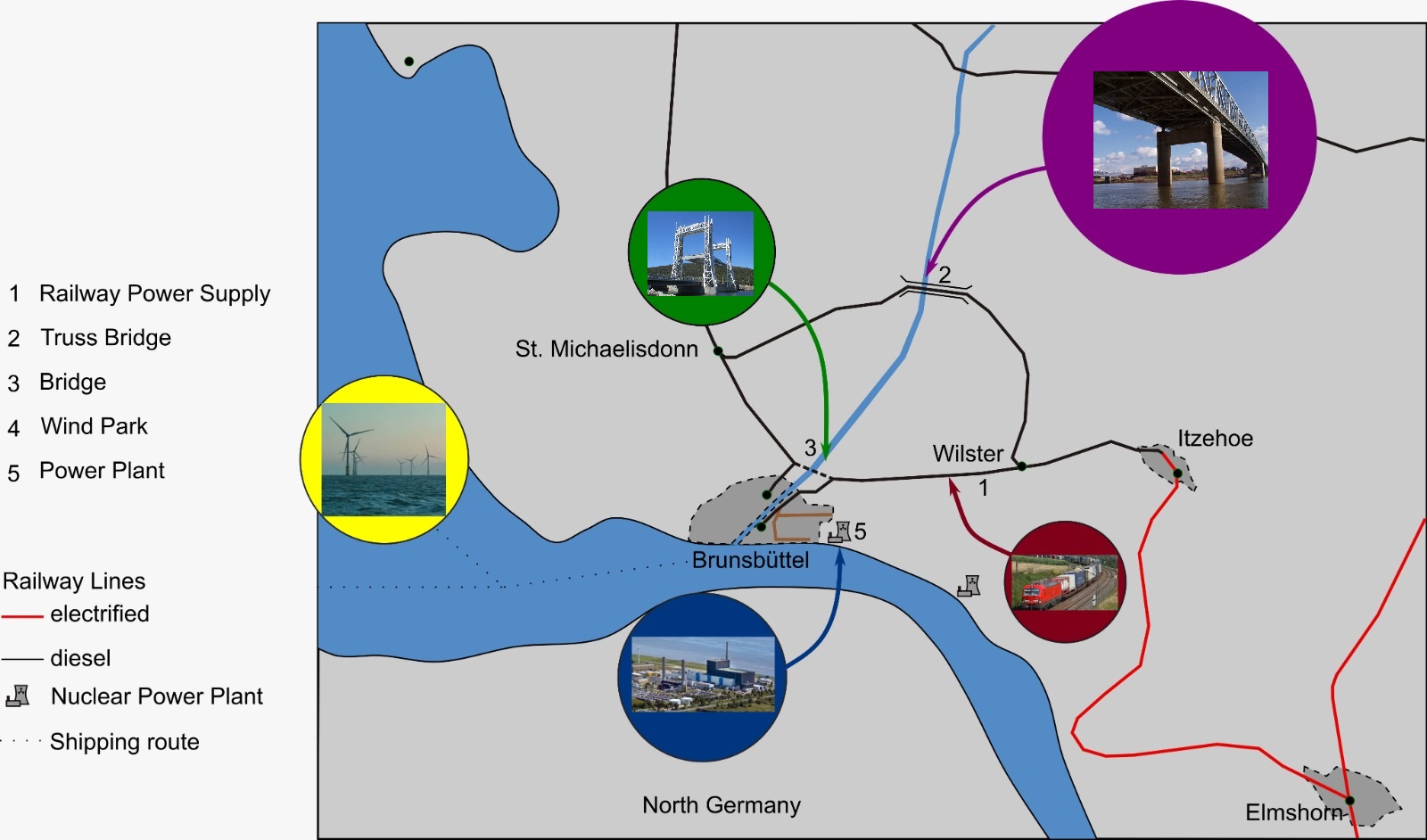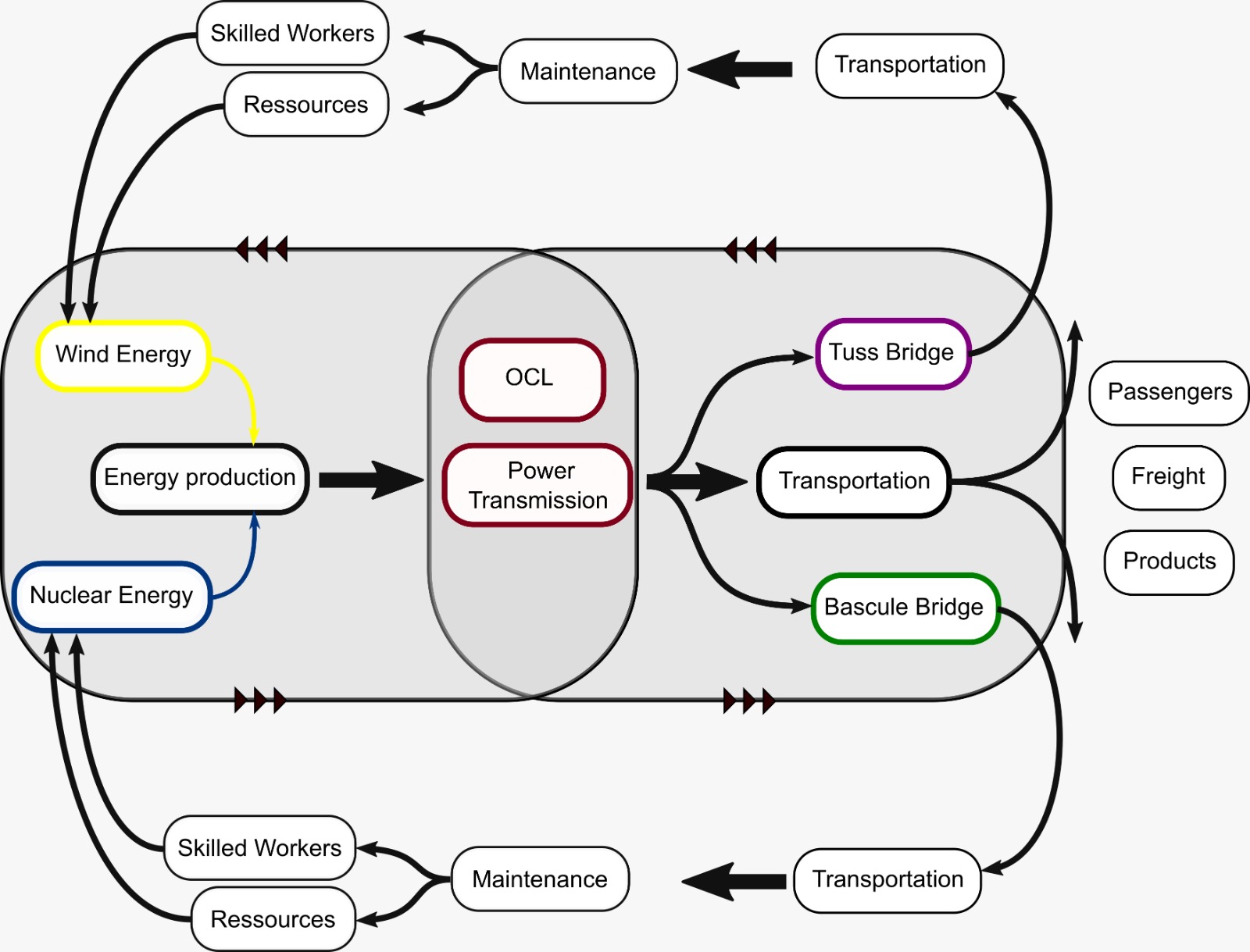In north Germany, where the Elba River meets the North Sea, there is Brunsbuttel. This city is well known for being the largest industrial area of Schleswig-Holstein. In order to increase the logistic platform, the need for electrification of the railway line from Brunsbuttel to Wilster arises. In addition, a secondary line from St. Michaelisdonn to Wilster is planned to be electrified. For this purpose, the construction and implementation of different civil systems will be planned and designed.
First, there is the need for the Railway power supply system itself. This is composed of a Transformer Station, Overhead Catenary System, Return Current System, and earth.
The existing Brunsbüttel Nuclear Power Plant located in the surroundings of the City will supply the railway line. However, as it is presented later, the maintenance interventions in the power plant posess long periods, during which an additional power source is necessary.
For this matter, an offshore wind farm at the river’s mouth will be constructed. It is worth mentioning that, as this type of energy is clean and renewable, it is planned for the future use of the required power for the electrification of the railway line. Meanwhile, the existence of the Nuclear Plant poses an advantage to speed up the start of the operation of the project.
As the Kaiser-Whilhelm channel crosses the two lines to be improved, the construction of new bridges is necessary. The logistic network will be boosted not only by the electrification of the railways but also by constructing new structures that allow an efficient clear mobility for vessels from and to the port. The first one, in the main railway line and near Brunsbüttel port, will be a lift bridge. The second bridge, in the St. Michaelisdonn to Wilster line, will be a truss bridge.
The integration of the systems can be seen in the picture below:
The diagram below expresses the relationship between the systems in terms of functionalities. Nuclear and wind energy are required for the railway system operation. These, in turn, require functional working infrastructure for skilled workers from Hamburg and surroundings as well as supplies for the maintenance.

